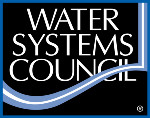
Water Supply Cost Savings Act Introduced in Congress to Help Address Small Communities’ Water Infrastructure Funding Crisis
WASHINGTON, D.C., Sept. 23, 2014 — On September 18, 2014, Congressman Marlin Stutzman (R-IN) introduced the ”Water Supply Cost Savings Act,” or ”Savings Act,” legislation to provide small communities across the nation with critical information on the use of water wells and water well systems to deliver high quality, affordable drinking water.
The Savings Act (HR 5659) was greeted with enthusiastic support from the water supply industry, including the Water Systems Council, the Water Quality Association and the National Groundwater Association.
“We are grateful to Congressman Stutzman for his leadership in championing the first piece of national legislation to provide local community decision makers with a cost effective option to utilize smaller domestic well water systems to meet community drinking water needs,” said Bo Andersson, Water Systems Council president. “Local water supply projects completed by WSC’s Water Well Trust have clearly demonstrated that these smaller systems can save the nation millions of dollars in infrastructure investment.”
The Savings Act is aimed at reducing the costs to federal, state, and local governments in providing quality drinking water to millions of Americans living in rural and isolated communities by promoting cost-effective community well water systems.
To assist small communities with their consideration of drinking water technology needs, the Savings Act establishes a Drinking Water Technology Clearinghouse where the Administrator of the Environmental Protection Agency and the Secretary of Agriculture will disseminate information on cost-effective, innovative, and alternative drinking water delivery systems, including systems that are supported by wells.
“The Savings Act is a simple, common sense bill that can save taxpayer dollars and, importantly, help rural communities gain access to much needed high quality drinking water,” Stutzman said. “I am thrilled to have the support of the Water Systems Council, the Water Quality Association, and the National Groundwater Association to advance this important legislation.”
There are 52,000 community water systems in the United States, of which 41,801 are small community water systems (3,300 or fewer people). EPA’s most recent Drinking Water Needs Survey placed the shortfall in drinking water infrastructure funding for small communities at $64.5 billion. The Savings Act will encourage these small communities to consider less expensive drinking water systems supplied by wells that could save taxpayers billions of dollars in infrastructure costs.
“Delivering high quality drinking water at a lower cost is a win-win for small communities,” said Margaret Martens, Water Systems Council executive director. “The local projects we have already completed through the Water Well Trust have realized savings of as much as 94% over traditional long-pipe, centralized drinking water systems, proving that water wells are a reliable, cost-effective way for budget-challenged communities to provide access to safe drinking water for their residents.”
Diann Scott, VP Marketing North America Water Systems, Franklin Electric and a member of the WSC board noted that, “Small communities often have difficulty financing the construction and maintenance of traditional long-pipe drinking water system as the cost per resident can be prohibitively expensive. The Savings Act will help rural America and other small community systems cost-effectively meet critical water needs and public health challenges while supporting domestic manufacturing and jobs.”
 Water Systems Council
Water Systems Council